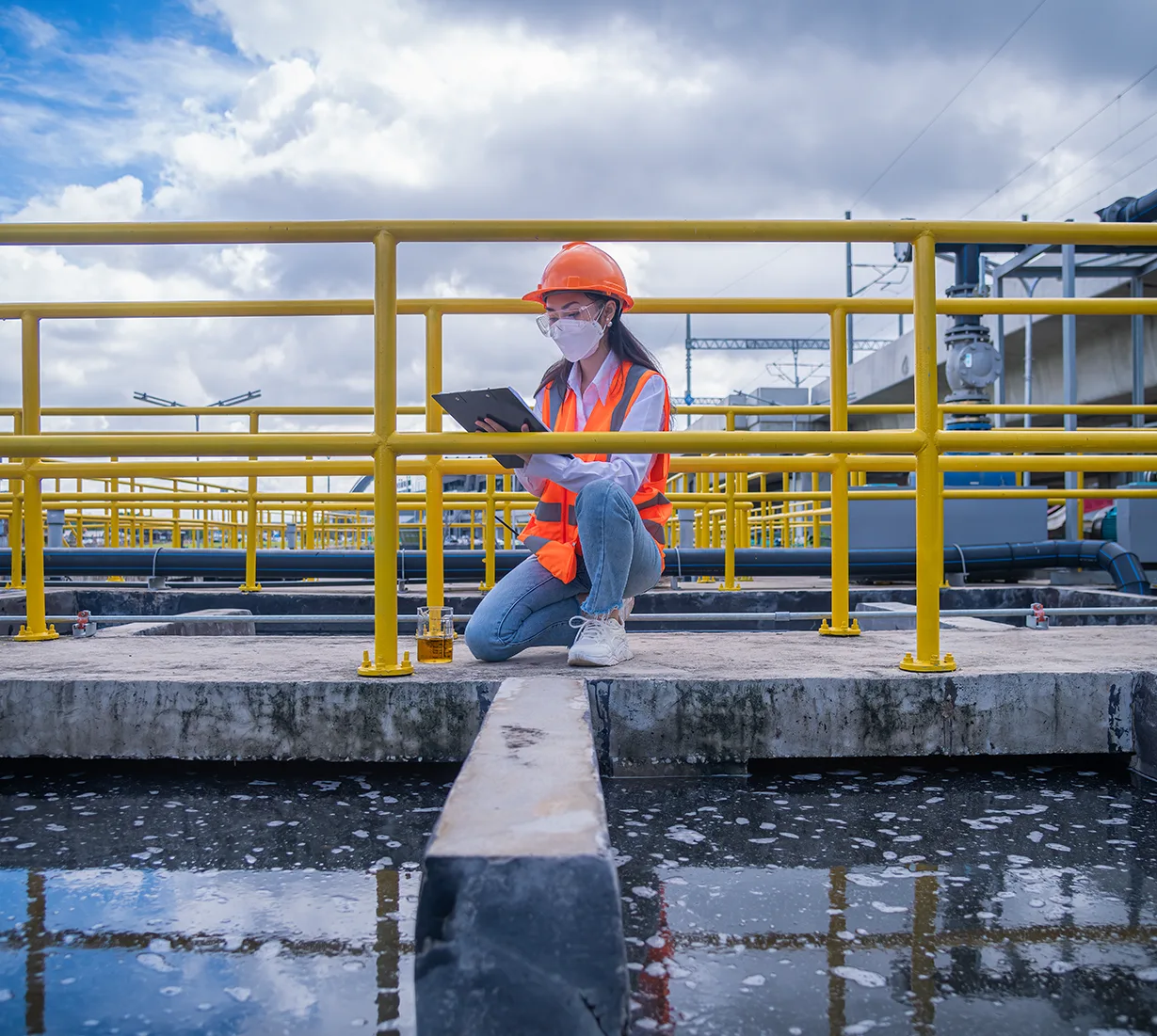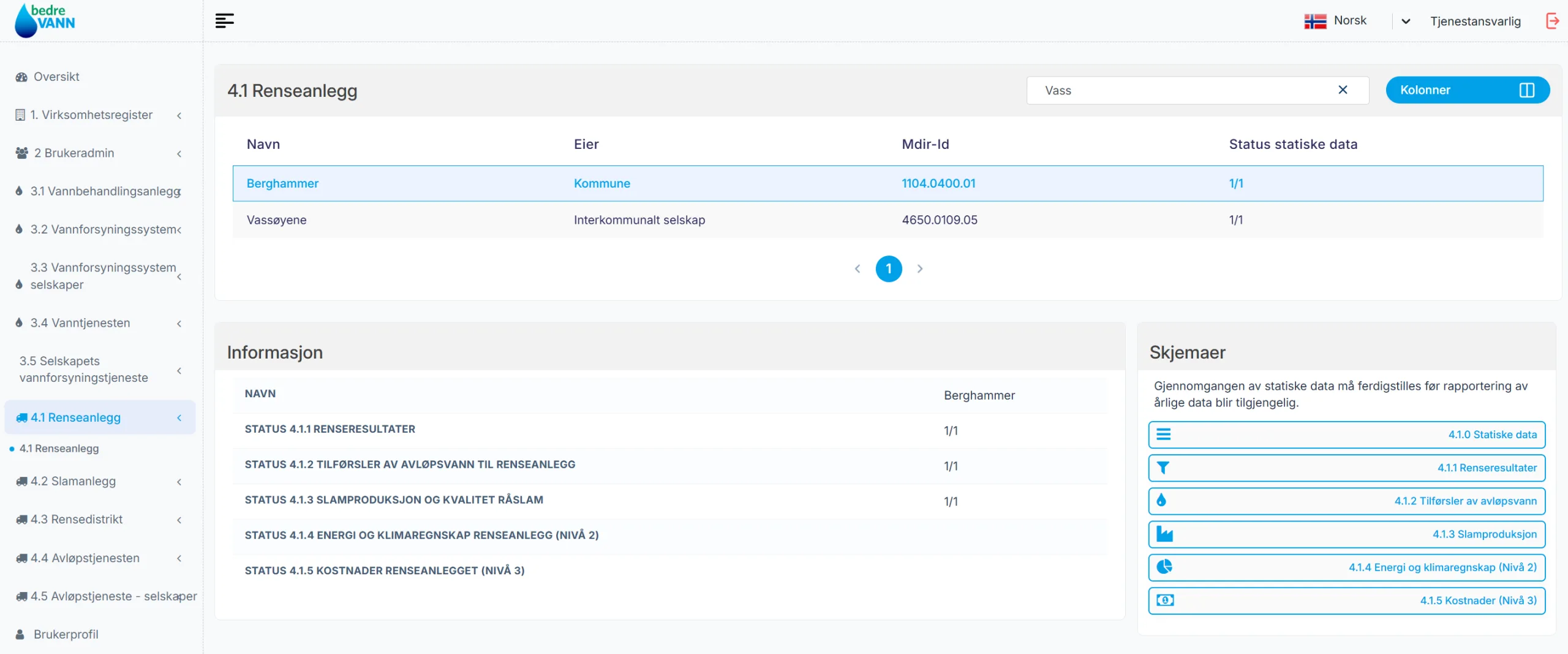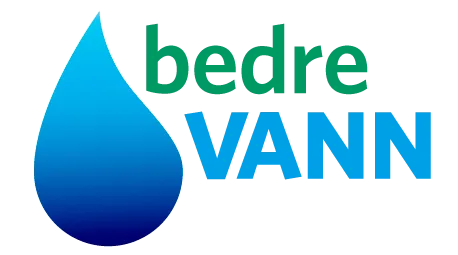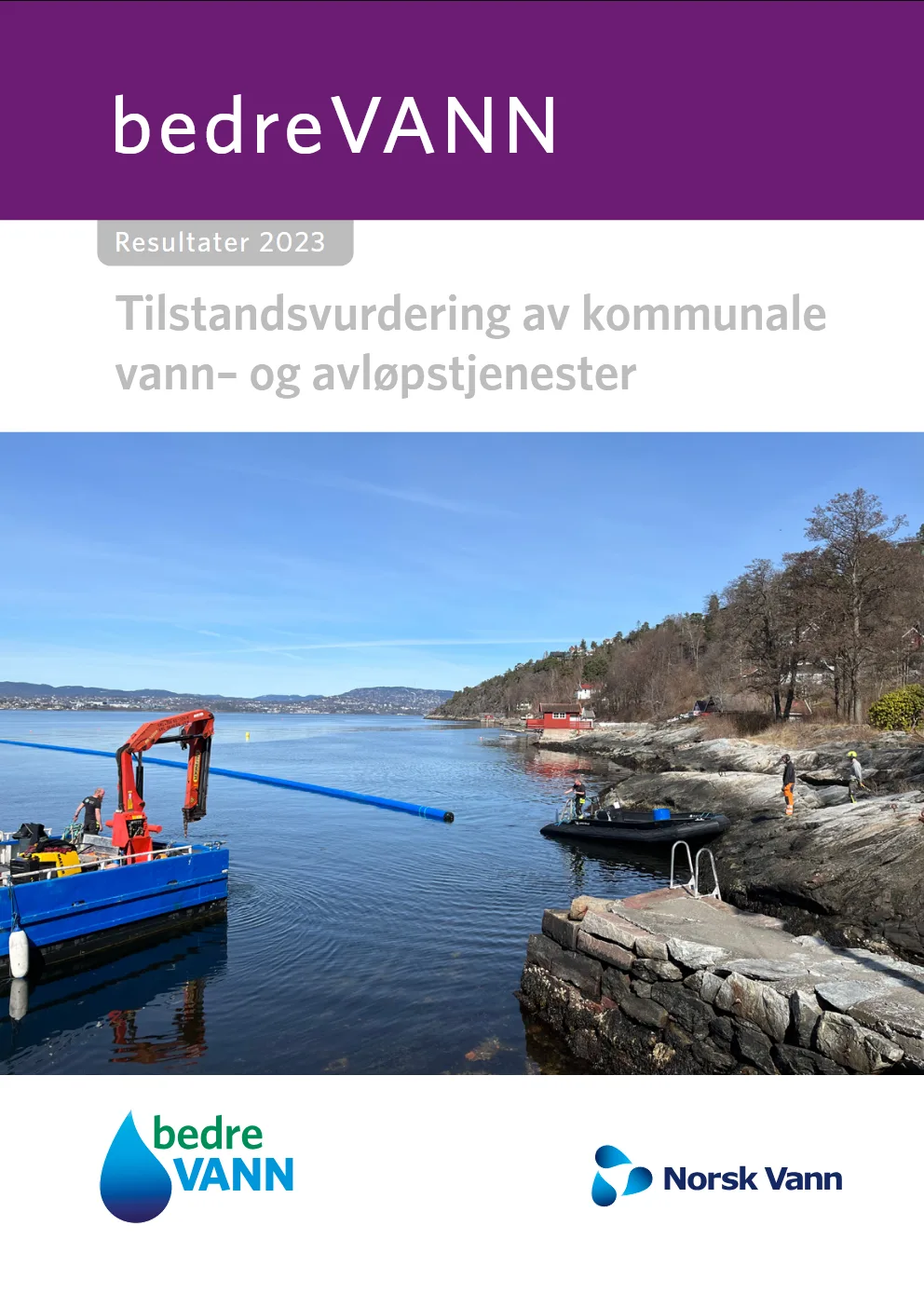Complex Clarity:
How Norsk Vann Standardized National Water Sector Reporting with Low-Code
Nation-wide water processing is a vast, interconnected, and uniquely challenging infrastructure to manage, Norway is no exception.
With over 100.000 data points annually, hundreds of facilities and multiple inter-municipal organizations; conducting structured reporting and and correctly attributing achieved quality and costs to the right municipality is a challenge of analytical precision at scale.
Norsk Vann partnered with Compose to modernize its national reporting platform. The result is BedreVANN 3.0 – A flexible, user-centric system built in Compose Enterprise and Compose Case Management that mirrors the real-world complexity of water systems while simplifying data entry, performance evaluation against legal and industry standards, circularity, and benchmarking between participants.
BedreVANN 3.0 enables simple and structured reporting that today covers approximate 80% of Norway’s water infrastructure. Let’s explore how.


Unseen Complexity
“A very interesting industry, that people know nothing about”
The water and wastewater infrastructure spans raw water sources, treatment facilities, distribution networks, wastewater collection and treatment, and sludge processing. Data from all parts of the system must be reported so that facility owners (municipalities and companies), national authorities, and the EU can verify that laws and regulations are upheld — and that production remains economically and environmentally sustainable.
Further complexity arises in Norway’s densely populated areas, where water and wastewater flows often cross municipal boundaries. Larger municipalities may assist smaller neighbors in service delivery, or regional collaboration may take place through inter-municipal organizations to address challenges in a cost-effective way.
Facility size and requirements, such as those for wastewater treatment, vary significantly across different parts of the country. As a result, the way reporting is carried out must be adapted to reflect these differences.
The Reporting Challenge
Duplicate data reporting: An effective reporting system requires that data is only reported once by the facility owner, and that all users of the facility can access the results without additional manual work. This was a key issue that needed to be addressed in modernizing the system.
Data volume in forms: Each facility has unique processes. Previously, all facilities received the same form, regardless of what was relevant to them, creating unnecessary complexity and overload.
Complex calculations: When resources are shared between municipalities or inter-municipal organizations, it is of great importance that both results and costs must be accurately distributed. Municipalities need to be able to see what the total effect is on the costs/fees to the residents from planned investments in both the municipality and the inter-municipal organizations. There must also be transparency in the assumptions and calculations behind these figures.
“Grasping how all of these data points and facilities are interconnected initially proved a challenge, but after close cooperation with Norsk Vann’s adviser May Rostad, we immediately discovered opportunities to simplify and improve the process for all stakeholders”
– Angelica Maza Larsen
Project Lead, Compose
Better water through statistics
BedreVANN is Norsk Vann’s national reporting system for service quality, environmental impact and cost data. The municipal services are required to meet the criteria from national authorities, criteria based on EU directives, as well as Norsk Vann’s own quality criteria.
The first version launched in 1998 with 10 municipalities.
The first technical implementation followed in 2008–2009, expanding the system to 50 municipalities.
Today, 75 municipalities and 9 inter-municipal organizations participate in BedreVANN.
How the Reporting Is Used
While BedreVANN is not used to submit reports to authorities, it plays a key role in helping municipalities and inter-municipal organizations:
- Assess service quality, circularity and cost efficiency.
- Track trends in infrastructure performance over time.
- Benchmark their results against other municipalities and organizations.
- Support budgeting, investment planning and audits.
- Ensure the accuracy of data used in required reporting to authorities
“At its core, BedreVANN is an analytical platform for assessing quality, safety, circularity, and costs.”
– May Rostad,Project Lead for BedreVANN, Kinei AS
Norsk Vann wanted to modernize it’s system, reduce the amount of data reported annually and renew the technical architecture to create the next generation of water statistics and analytical platform.
The Solution: BedreVANN 3.0

The Solution: BedreVANN 3.0
The Solution to meet the scale and complexity of this project, became BedreVANN 3.0 – A system built in Compose Enterprise and Compose Case Management to bring logic, clarity and structure to a fragmented reporting landscape.
The project aimed not to only to modernize the system, but to rethink and improve the entire process.
Together, we created a solution that reflects the true structure of Norway’s water and waste infrastructure while remaining simple and intuitive for end users.
As a basis for this system, we created a digital register of the entire water infrastructure in Norway, that becomes the basis for what fields facilities see in the reporting forms.
Here are some of the improvements in the new system.
Project Highlights
Team Size: 3 Compose Consultants
Data Volume: 100,000+ data points processed annually
Reporting Reach: ~80% of Norway’s water infrastructure
Platform: Compose Enterprise + Compose Case Management
Clear separation of static vs. dynamic data
Data that rarely changes (like facility types & infrastructure layouts) is now preserved and only updated as needed. This reduces the reporting burden for participants.
Dynamic Forms based on facility type
Based on the static data the facility inputs, the forms dynamically update, ensuring only relevant fields for each facility are shown – ensuring less irrelevant information and simpler reporting.
Pre-fill of static data in the forms
In addition to automatic pre-fill from national registers, static facility data is now also pre-filled in the forms. Significantly reducing manual input and saving time during reporting.
Streamlined user interface and historic data
Unnecessary fields have been removed, simplifying forms, and making the system faster and easier to navigate, reducing the time needed for reporting. The inclusion of the last two years of data in the forms allowing for rapid verification of data and to generate insights even in the data collection stage.
Role-Based Access and Control
Users are assigned defined roles (e.g., Service Owner, Report Owner, Admin), and see only the forms/tasks relevant to their responsibilities. This also changes what elements they see when inside the platform – dynamically changing the UI to only show the relevant components to their facility and role.
Deferred calculations
To maintain system responsiveness and avoid slowdowns caused by large-scale, complex calculations, calculations are no longer performed in real-time during user interaction. Instead, they are strategically deferred and triggered before and after form submissions. This ensures that all necessary calculations are performed efficiently while keeping the system fast and easy to use.
Single-source data responsibility
Only the facility owner submits data into the system. All other users of that facility receive their portion of the results automatically. This reduces manual work, eliminates duplication, and ensures clarity in provides clear responsibility and traceablity in reporting.
Proven Impact
Simpler Reporting and Faster Processing
Feedback so far has been overwhelmingly positive, with faster submissions and reduced admin across the board.
Participating municipalities now spend less time on reporting and more time on using the insights.
Norsk Vann faces less manual work during the creation of it’s annual report, and more time analyzing the results – ensuring a better system for all stakeholders.
With BedreVANN 3.0, structured water reporting isn’t just possible, it’s streamlined. And the insights it will deliver will aid in shaping a smarter, more sustainable future for Norwegian water services.
Faster reporting for end users
Municipalities will be able to complete submissions in significantly less time than before.
Fewer errors and duplication’s
Inter-municipal overlaps are now handled with single-source responsibility.
Simpler training and onboarding
New users are authenticated with single sign-on and quickly understand their forms and tasks thanks to role-based access and filtering.
Easier cross-municipal coordination
Each facilities now report once, on it’s own data, with shared access – eliminating duplicate data entry and creating clearer statistics.
“There has been minimal issues in implementing the new solution, considering the complexity of the system and the historical import of 100 000+ data points”
“We are very happy with the data that has already been submitted into the system already”
Whats your challenge?
Our team of low-code development experts is here to provide you with insightful answers to any questions you may have. Whether you’re just starting out or looking to enhance your existing projects, we are ready to assist you in building your vision today.

